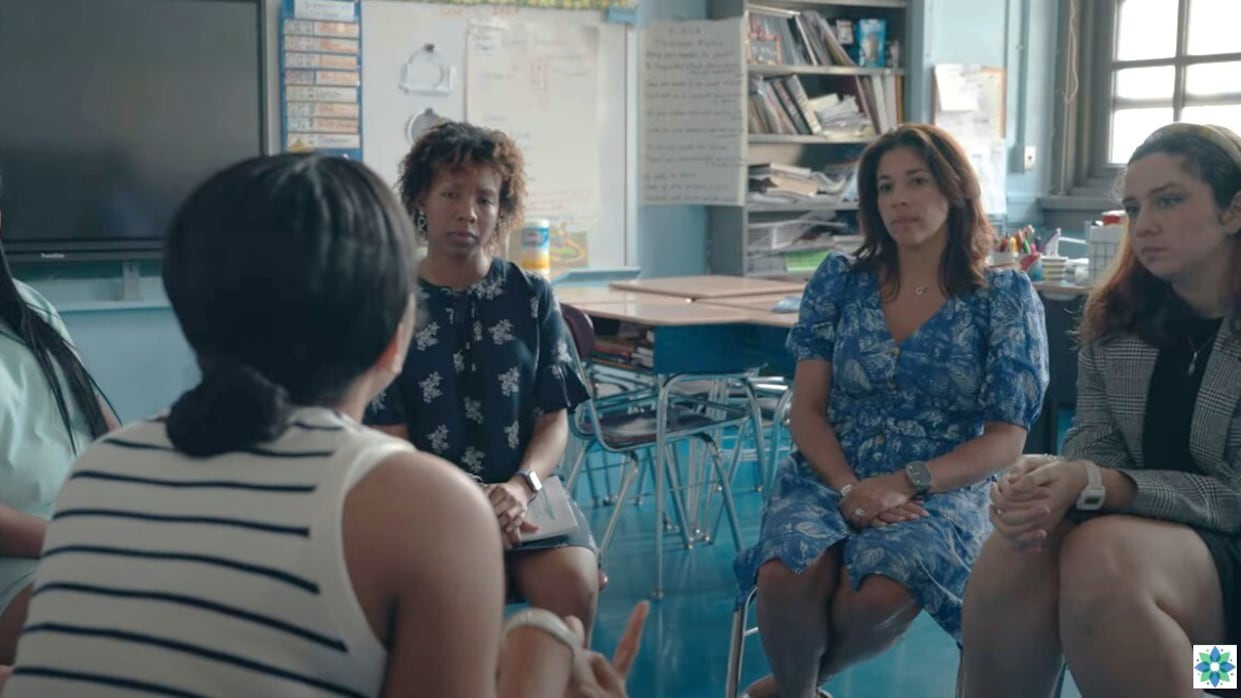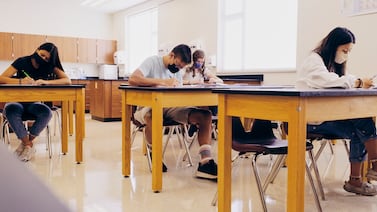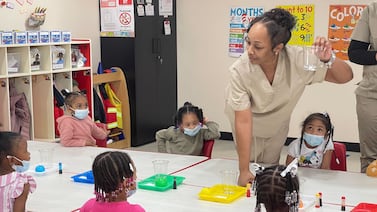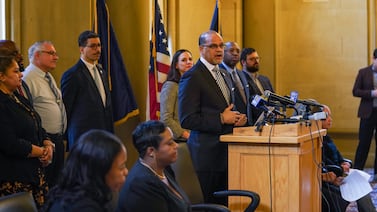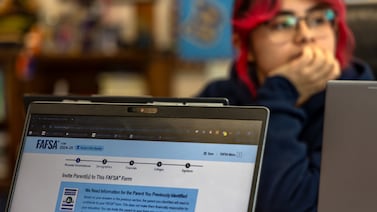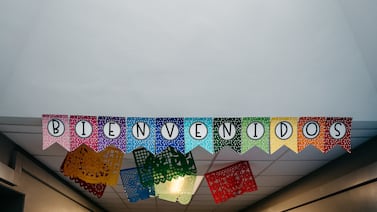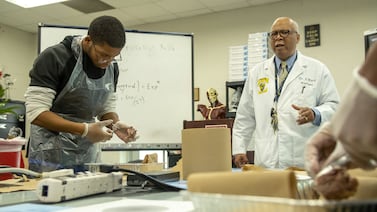Sign up for Chalkbeat’s free weekly newsletter to keep up with how education is changing across the U.S.
As a middle school math teacher, Lisset Condo Dutan’s days often revolved around fractions and equations. But when the pandemic hit, her virtual classroom became a place where students came to confide in her.
“I would only see them through a screen, and they would share with me: I lost my grandma, I just lost my dad, I just lost my mom,” she said. She tried her best to listen, but she knew they needed more. “They didn’t really have the emotional support that they needed.”

Driven by those conversations, Condo Dutan went back to school to get her master’s in counseling — while she was teaching full-time — and became a school counselor.
Last fall, she took a position with the nonprofit Counseling in Schools, which places school counselors in dozens of schools throughout New York City. Condo Dutan now works at P.S. 149 in Queens, not far from where she grew up. She was among a dozen bilingual or bicultural counselors that the nonprofit hired to meet the needs of a growing number of migrant students who’ve enrolled in the city’s schools.
Now, she spends her days popping into classrooms to see if newcomers need any help and meeting with students in small groups or one-on-one.
“Even though they went through a lot, they’re the strongest people that I’ve ever met,” she said. “I admire that.”
Condo Dutan spoke with Chalkbeat about how art therapy, breathing exercises, and sharing details from her visits to Ecuador have helped her connect with her students.
This interview has been lightly edited for length and clarity.
What are some of the mental health or social-emotional needs that your newcomer students have?
A lot of them have undergone some sort of trauma. Especially when they share their journey coming here to New York, either what they saw on their way here or what they saw at the detention centers at the border. It impacts them a lot.
Become a Chalkbeat sponsor
Thankfully, a lot of the teachers pick up on these little emotions. Maybe they walk in sad one day or they look upset, or there’s a change in behavior. They’ll ask: Can you please just check up on the student? And when you check up on them, you realize that there’s a lot of things that are still bothering them.
They’ll share: You know, I had this nightmare, I’m still thinking about this. I remember when we were crossing the river. Or, honestly speaking, they’ve seen people pass away on their way here. Unfortunately, they’ve seen bodies and stuff like that. And these are third graders, second graders, fifth graders.
That’s still there for them. So, sometimes they do have days where they’re a little off. [It’s important] to provide them with that support and that safe space.
When you’re starting to build a relationship and a rapport with a student who has been through a really tough journey, what are some of the things you do to help establish that you’re a safe person and that they’re in a safe place?
I let them speak about their culture. A lot of these students are very proud of where they come from, so I give them that opportunity and that time to teach me about themselves.
Sometimes, we’ll share memories. But usually, we do a lot of art therapy. For most of them, that’s easier. Markers, crayons, glitter, pens, paints — anything that I have in the office.
They’re drawing their favorite dishes, their favorite places, or their favorite people that they left behind, as well as their pets or any traditional celebrations. For example, for Christmas, they shared that certain countries have a whole festival for like a week. They would draw bumper cars and parties, and certain cultural outfits.
What are some of the acculturation struggles that you’re seeing?
Usually, what they share is that it’s just hard overall. In their countries, they would have more freedom. There would be much more fresh air and free space for them to run around. Coming here and being in an apartment, or being stuck in school, it’s different for them.
They’ve slowly been getting accustomed to school life. It’s been a lot of teaching them how to schedule their time, time management, as well as asking them what other resources they need in order to feel comfortable.
What strategies or coping skills have you taught students that they’ve found helpful?
We’ve done a lot of breathing exercises. Sometimes [their exposure to trauma] does get them a little uneasy. They really like [an exercise called] smell the flower, blow out the birthday cake candle.
I usually ask them: If I had a flower in my hand, how would you smell the flower? And they would inhale and breathe in. And when I ask them to blow out a birthday candle, they blow out through their mouth. It teaches them how to not take quick breaths.
Become a Chalkbeat sponsor
I’ve also done a lot of cooked spaghetti, uncooked spaghetti. I have students basically tense up every part of their body. So they’ll become very stiff, like uncooked spaghetti. And then I allow them to become like cooked spaghetti, very noodly, so they let go of everything.
It’s allowing them to take notice of what part of their body is under stress, and teaching them how to express themselves when they feel that stress.
How does being able to speak Spanish allow you to connect with the students in ways that wouldn’t be possible if you didn’t speak their language?
Instead of having to translate what they’re feeling, they’re able to just express themselves exactly how they feel.
If I don’t understand something, I do ask them: Oh, what do you mean by this? It could be because of cultural differences. I take that time to let them teach me about what they’re trying to say, or what they’re trying to get out.
Do you ever share things about yourself with the students to help make a connection with them?
My parents are Ecuadorian, and I do bring that to the table. When I go to Ecuador, I visit my grandpa, I go to the countryside, I go to the city, and I’m able to share that with them. Even if the child is not from Ecuador, they’re more open to opening up to me because they realize: She’s been outside of New York, she understands what’s going on in other countries.
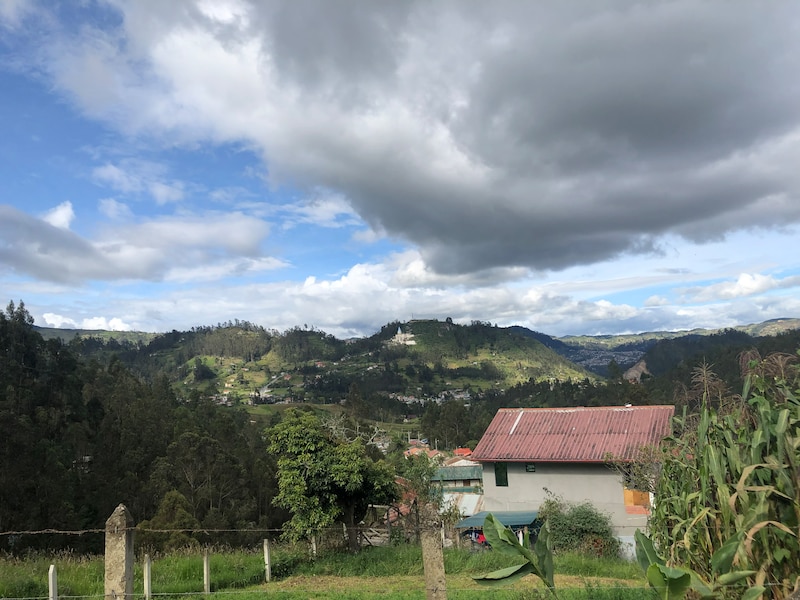
They ask me: Have you tasted salchipapas? Have you tasted a traditional dish called tripa mishqui? I’m open to sharing that information with them, and they’re usually very happy [to talk about it].
Where my grandpa lives, it’s like a farmland. A lot of them came from farmland. So, me being able to say: You know, when I go to Ecuador, I spend a week with my grandpa, and I help him feed the cows and feed the horses. That usually sparks something in them. They look at me like: You did that? I used to do that! Little things like that have really helped me connect with them.
Kalyn Belsha is a senior national education reporter based in Chicago. Contact her at kbelsha@chalkbeat.org.


